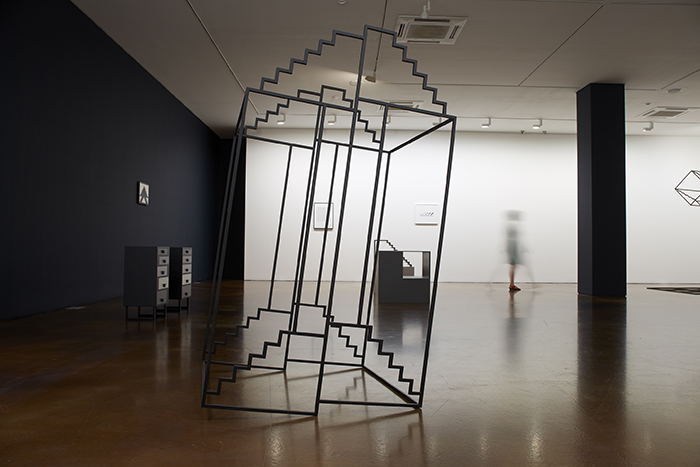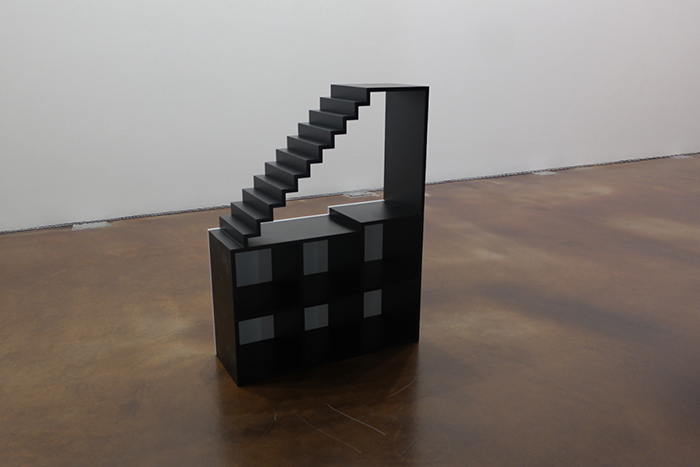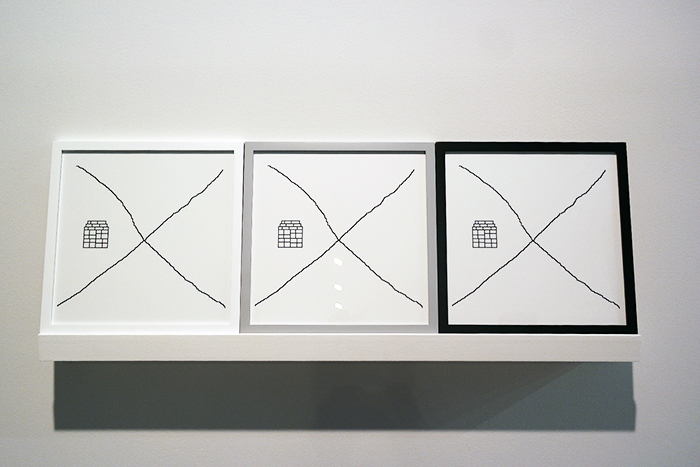INHALE is a cultural platform where artists are presented, where great projects are given credit and readers find inspiration. Think about Inhale as if it were a map: we can help you discover which are the must-see events all over the world, what is happening now in the artistic and cultural world as well as guide you through the latest designers’ products. Inhale interconnects domains that you are interested in, so that you will know all the events, places, galleries, studios that are a must-see. We have a 360 degree overview on art and culture and a passion to share.

Hong Seung Hye’s sixth solo exhibition at Kukje Gallery is a retrospective, after a fashion. Arrayed around K2—one of the Seoul gallery’s spaces—are prints, sculptures, and furniture that co-opt the titles and forms of her earlier works. The stainless steel structure in On & Off (all works 2014), for example, matches a previous sculpture made with red lacquer on wood; both create portraits of teetering, pixilated homes. Color has also drained from Debris, a set of dollhouse-like boxes that break rank with their 2008 forebears, preferring the floor to the wall, and steel to lacquered wood. It would seem that history—at least in Hong’s case—is best viewed in grayscale.
Entitled “Reminiscence,” Hong’s show is not a mere exercise in citation. While acknowledging that “the past is fixed,” the Korean artist also has an interest in evolutionary processes, leaving open how earlier artworks may be entailed in future ones. This interest dates as far back as 1997, when Hong began her ongoing “Organic Geometry” series, which explores the permutations of primary digital structures. Echoing the modernists, the artist started by working with the grid, though hers is not a site of transcendental abstraction, but a laboratory for formal experimentation, where pixels can germinate toward undetermined ends. For her part, Hong sets the coordinates on this virtual Cartesian plane: by exploiting the algebraic constraints of the interface, as well as facilitating the transformation of digital images into art objects.
In Organic Geometry, at one corner of the main gallery, three identical prints sit propped on a shelf. They feature a blocky structure quartered in an obnoxiously large “X” of a seeming expressivity that belies its pixel-laden facture. While specifically indexing their virtual origins, the prints imply that expression and negation are never without mediation. With these three images, the frames do part of the work, introducing difference through their respective black, grey, and white tones.
Elsewhere, other hierarchies come under review. The birch plywood Dancing Drawers seem untroubled by their position at the threshold of fine art and design. As one unit’s drawers remain straight-faced, the other’s zigzag with personality. The gallery goers seem equally untroubled; during my visit, two women investigated their contents.
-review via art-agenda.com

































































